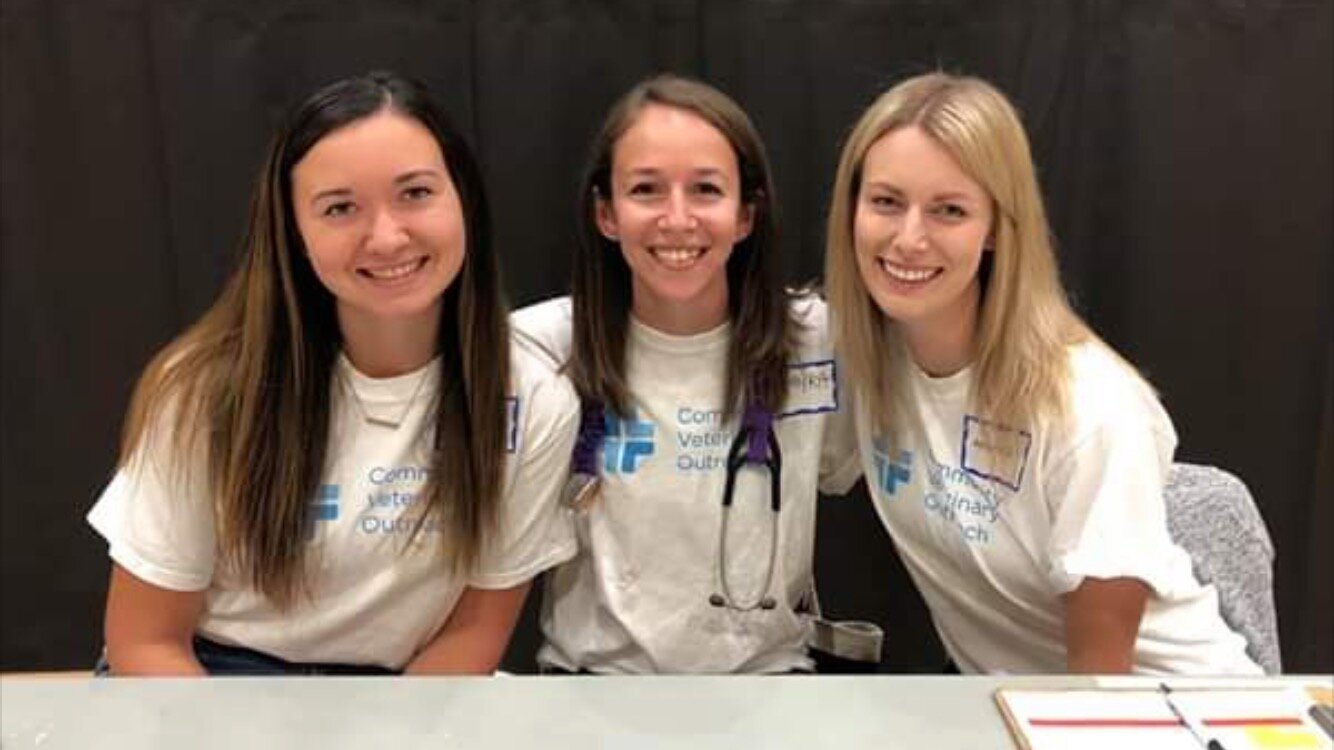Before I get too far into this post, I want to introduce a concept that is near and dear to my heart: One Health. The term “One Health” is described as a collaboration between multiple disciplines for optimal health for humans, animals and their physical and social environment. One health aims to improve the health and welfare of the client by providing health services and community connections that matter to them. By amplifying health messages though veterinary care, the One Health community hopes to engage pet owners in care for themselves and vice versa.
I first became aware of the concept as I was graduating from vet school in 2012. I feel like it was just starting to gain momentum and notoriety across human and animal medicine. To be quite honest, at the time I was preoccupied with passing my final year of school, getting a job, becoming a new grad, etc. It seemed like a distant concept more so related to my public health class than anything else.
As the years went by I became more educated in the realm of One Health initiatives, especially as I travelled north for various vaccination clinics and spay/neuter initiatives. It wasn’t until I started volunteering with Community Veterinary Outreach that I began to appreciate the unusually powerful way in which providing healthcare to animals, may improve accessibility to the pet owner’s healthcare and confidence as a pet owner.

Left to Right: Shai (RVT), Dr. Samyra Stuart-Altman & Amanda (RVT) at the August 2019 CVO event held at the Broadway Neighbourhood Centre.
I can thank my dear friend Dr. Jonas Watson for introducing me to Community Veterinary Outreach (CVO). He had emailed me in the spring of 2017 and I was essentially “voluntold” that I would be assisting at the first Winnipeg CVO event at R.A.Y (Resource Assistance for Youth). I was happy to help and curious to learn about CVO, a cross-Canada program that had started in Ontario. The program’s goal is to deliver free veterinary care for homeless, vulnerably housed and street involved youth and adults. Their message, and now mine, is that social status does not dictate your deservedness of pet ownership and the human animal bond. And we use the promotion of veterinary care as a means to discuss and then offer, accessible health care. The human healthcare offered may vary between clinics, but has included complimentary dental exams, flu shots, STI testing, and so on. Everything is optional, and clients are not in any way pressured to take advantage of all of the services. They are however encouraged to visit every station if they are comfortable in doing so.
Though every clinic is slightly different, the general rundown is as follows: Volunteers arrive a few hours before the clinic opens to set up the veterinary stations, dental health stations, and assist with the human health stations. The participating organizations range from the school of dental hygienists, Klinic, R.A.Y, and the Winnipeg Humane Society subsidized feline spay/neuter program. Volunteers come from all walks of life, including veterinarians, vet techs, groomers, trainers, animal enthusiasts, nurses, teachers, you name it. There is a job for everyone (see end of article for a public service announcement to call on readers to become volunteers). As the clients start to arrive, they are greeted at intake and then escorted to a veterinary station first. It is not uncommon for clients to have walked as far as an hour, biked or taken the bus to arrive to the clinic which is usually held in a community centre or family centre in the city’s core neighbourhoods. Dogs, cats, and even snakes, are examined, vaccinated and dewormed. Any health issues are brought to the attention of the organizing veterinarians with the goal of connecting pet owners with resources after the clinic is complete.
From the veterinary station the clients and their pets are shown to the next stations, going through the pet dental health station, the nutrition station where they can have a complimentary bag of food for their pet, and then onto the human health side. Pets who are in need of spay and neuter surgeries are identified so that they can be done at a later date. It’s not uncommon for the entire family to attend, and so it really does become a family outing.
These events are some of my favourites because I get to do what I love best. I get to care for animals, meet new people, lend a hand to those in need, and celebrate how the human-animal bond is good for our health! The human-animal bond is not reserved for those of elevated social status. We are not in a position to judge who can and cannot have a pet. We can however understand that life can be tumultuous, and sometimes a person requires a helping hand from a fellow human being. And if helping an animal in need may indirectly help their human caregiver, then I am doubly thankful to play even a small part in that happening. And as I write this on Thanksgiving Monday, I realize that I am thankful for the ways in which my chosen profession can be shared with others.
If you or anyone you know may be interested in volunteering for with Community Veterinary Outreach, please follow the link below for more information.
https://vetoutreach.org/volunteer-info/
Written by Dr. Samyra Stuart-Altman

